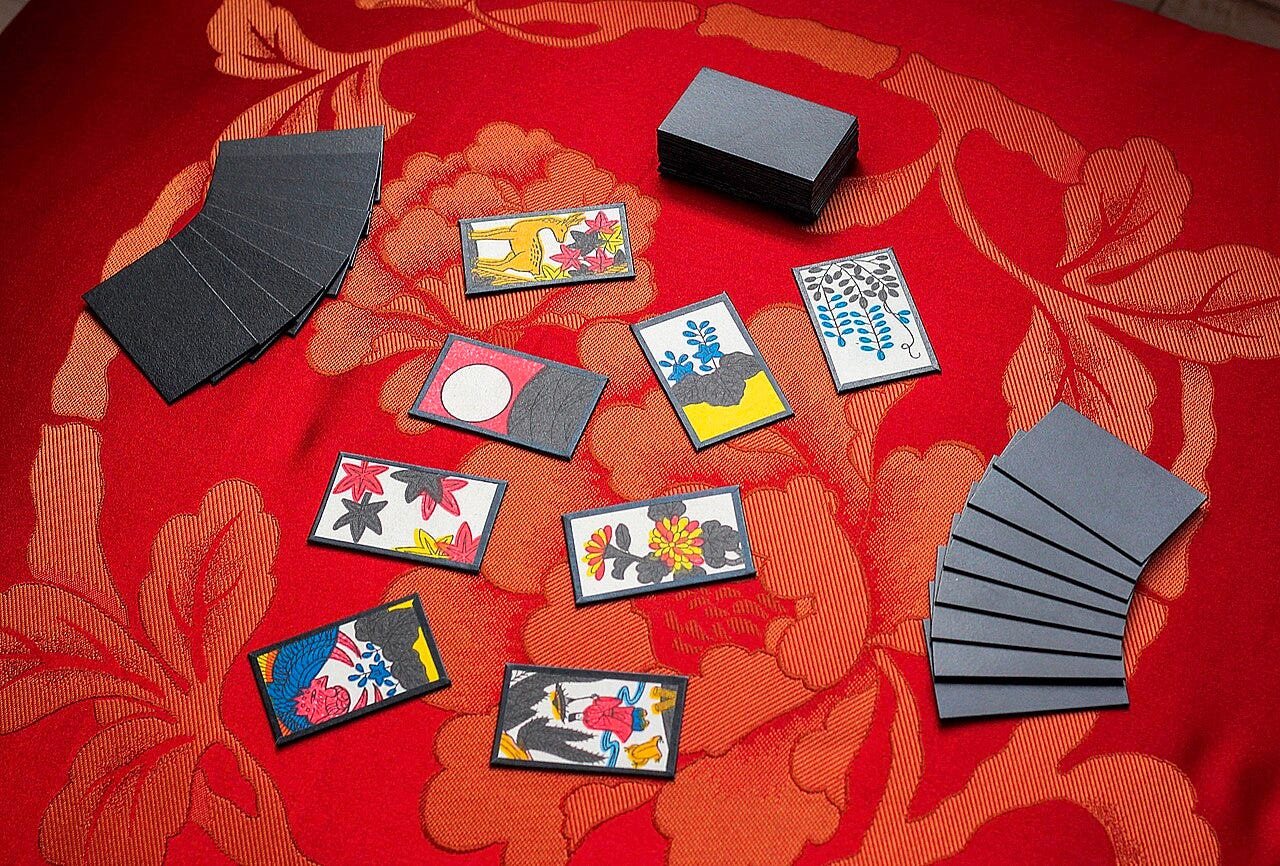Karuta Game: The Origins of Nintendo?

One of the top-50 best-selling games on Nintendo Switch, Clubhouse Games, is a collection of traditional games such as chess, backgammon, go, darts, and bowling. It also includes a game called hanafuda. What the hell is it?
In the 1500s, Portuguese merchants had run into playing cards in China and had introduced them to Japan. The Japanese promptly went nuts for this new invention. They called them karuta (歌留多, from Portuguese carta) and used them for all sorts of games, many of which involved gambling.
The government saw people having fun and panicked. Gambling mixed with foreign barbarian influence? Think of the children! Then, as now, the government was made up of conservative old men out of touch with the world. Substitute any modern technology for playing cards and you get the idea: “LeT’s BAn tHe TIkkyTockz!” The government banned the cards.
An arms race developed: card makers kept changing the designs, and the government banned them as soon as they became popular.
Last time we looked at kai-ōi with poems and with Genji pictures.
A combination of the newfangled Portuguese-style karuta and the poetry scribbled inside kai-ōi shells inspired uta-garuta: cards with famous poems. The Hyakunin isshu (“One Hundred Poems by One Hundred Poets”) deck is played competitively to this day. There’s even a manga & anime about it: Chihayafuru. (I say “even,” but there’s anime about every damned thing...in fact there’s one that’s a fictionalized origin of the poems used on the cards, too: Chōyaku Hyakunin Isshu: Uta Koi.)
The Genji pictures version of kai-ōi led to e-karuta (they didn’t put these games on the internet, it meant “picture cards”) in which players tried to match pairs of pictures. All kinds of objects appeared on these cards: plants, animals, aristocratic furnishings, ships’ crests, famous warriors, etc. Were the cards partly educational, or were the card printers just trying to avoid the laws? Who cares! Everyone was having fun dodging the ban hammer.
One particular set of picture karuta was really successful: hanafuda (“flower cards”). This deck has 48 cards with pictures of seasonal plants, four cards for each month of the year. Hanafuda cards are about half the size of a modern Western playing card, but much thicker and stiffer. Like a lover’s palm on your bum, they make an insanely satisfying slapping sound when you throw them on the table.
In 1885, the government chilled out and lifted the bans on karuta, and hanafuda were once again printed openly starting in 1888. Nintendo traces its origins to the renewed hanafuda boom: Nintendo Koppai was founded in 1889 and its first products were hanafuda cards. So that’s why Clubhouse Games includes a hanafuda game.
Nintendo also still makes real hanafuda cards today—including special sets with Mario, Pikachu, and other important figures from Japanese history.


I have always wanted to play hanafuda in real life, specially koi koi, but alas they are region locked to japan